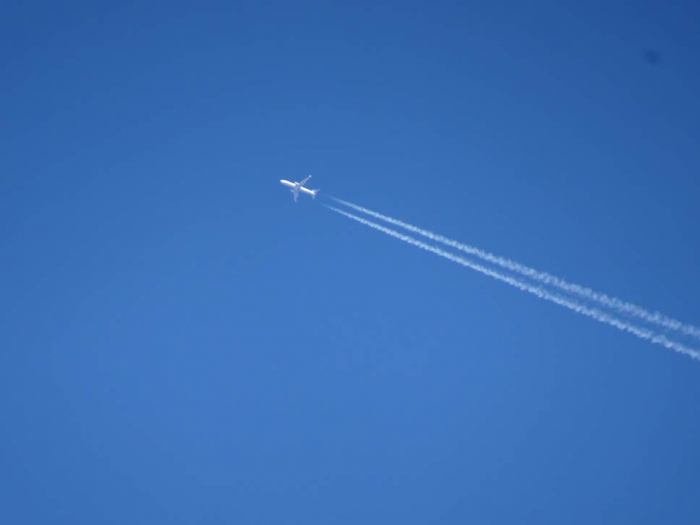This is an unaccounted source of climate warming from air travel. And researchers from the Institute of Atmospheric Physics (IAP) in Germany now say the problem is set to triple by 2050.
“It is important to recognise the significant impact of non-CO2 emissions, such as contrail cirrus, on climate and to take those effects into consideration,” said lead author Lisa Bock from the German Aerospace Centre at the Institute of Atmospheric Physics.
The Corsica agreement, which is the UN’s scheme to offset air traffic carbon emissions from 2020, ignores the non-CO2 climate impacts of aviation.
However, the latest findings will raise alarm over the climate impact of contrails. Researchers say the relative increase in radiation caused by contrails will be greater than that of CO2 because planes will become more fuel efficient.
Overall air traffic is set to be four times larger in 2050 compared with 2006 levels, but planes are generally flying slightly higher, which helps the formation of contrails in the tropics.
Areas over North America and Europe will be most affected as this is where most traffic is, according to the study published in the journal Atmospheric Chemistry and Physics.
Dr Bock said: “There are still some uncertainties regarding the overall climate impact of contrail cirrus and, in particular, their impact on surface temperatures because contrail cirrus themselves and their effects on the surface are ongoing topics of research. But it’s clear they warm the atmosphere.”
More efficient aircraft would reduce the number of soot particles emitted by engines, which could, in turn, reduce the climate impact of contrail cirrus.
However, researchers say larger reductions than the projected 50 per cent decrease in soot emissions are needed.
The Independent
More about: climatechange
















































